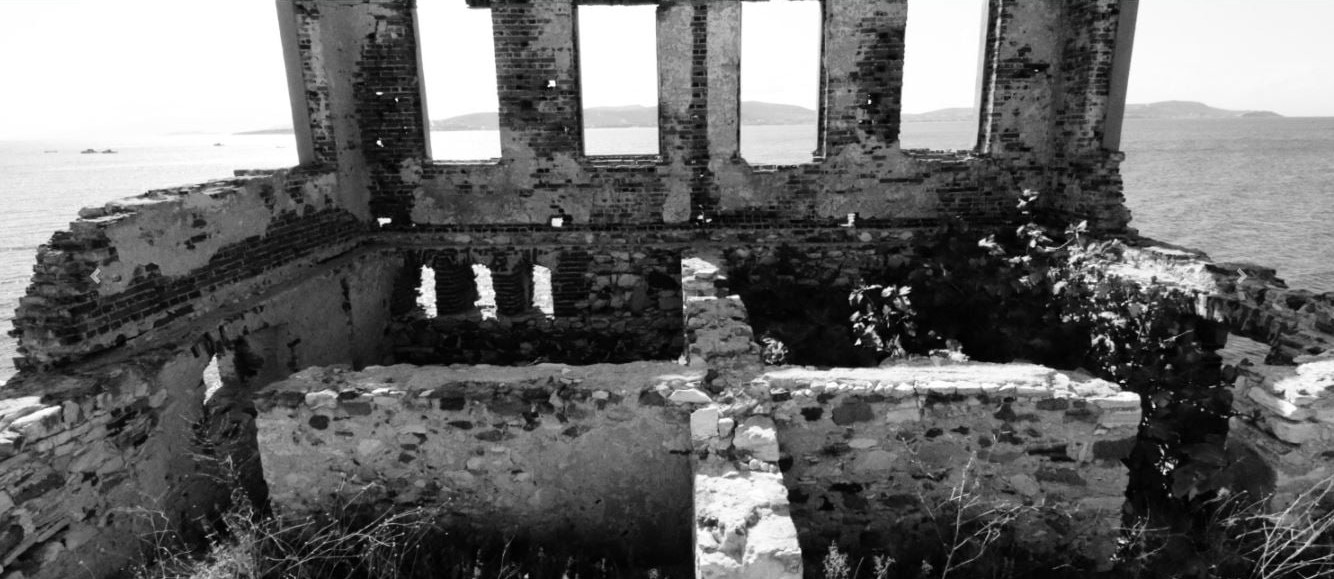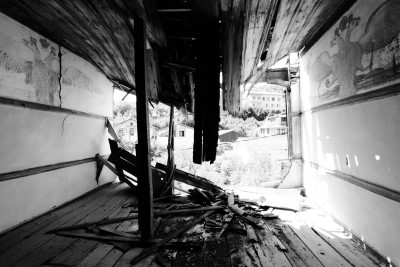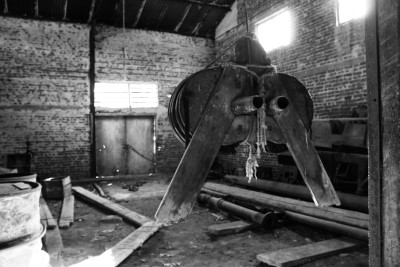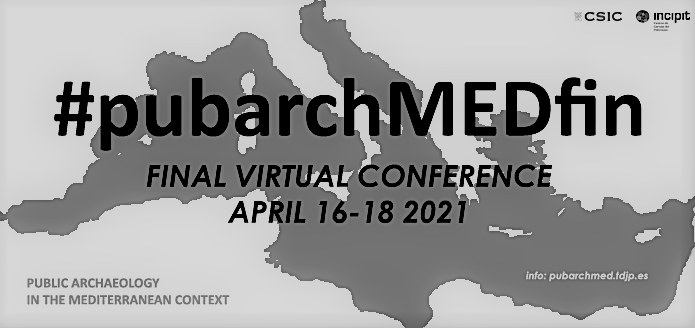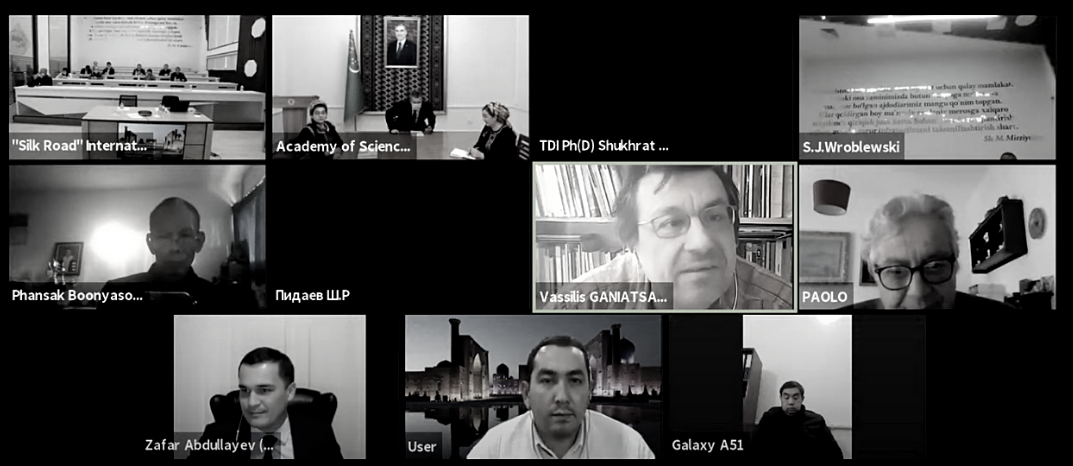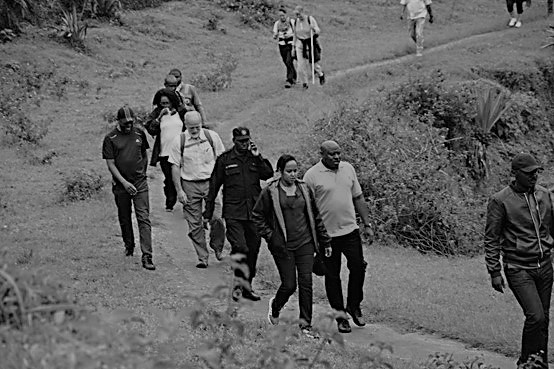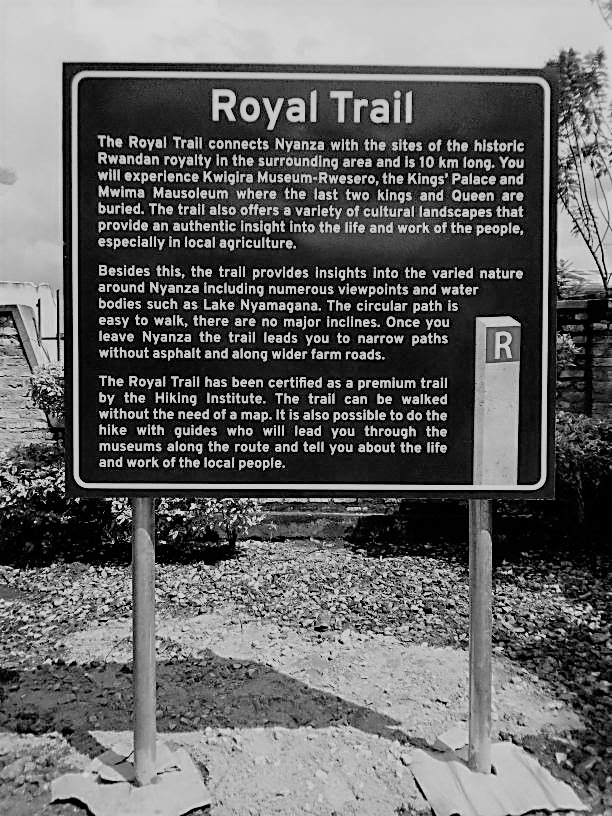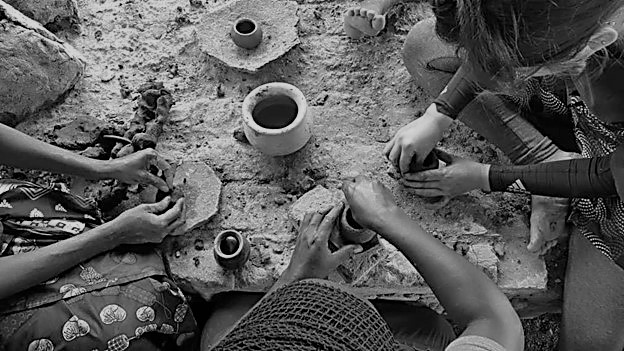: Uncategorized
“Successful Fundraising for Heritage Managers: Strategies and Best Practices” Workshop
The workshop on “Successful Fundraising for Heritage Managers: Strategies and Best Practices” took place from 05 to 07 February 2021.
15 heritage managers from Africa (Rwanda, Gambia, Ethiopia, Uganda), Asia (Iraq) and Europe (Spain, Greece, Germany) have been trained on fundraising strategies and skills needed to start-up and build an organization’s contributed revenue with the aim of increasing its impact in the world. Participants learned best practices and applied them to create the case for support and letter of inquiry for their own organization or project. Workshop sessions combined live and asynchronous lectures, case studies, class discussions and interactive exercises to develop and apply strategies in fundraising.
The workshop was conducted by Linda C. Hartley, principal of H2GROWTH STRATEGIES LLC, former CEO of The Maritime Aquarium at Norwalk, CT, USA. Hartley co-authored the book, Big Impact: Insights & Stories from America’s Non-Profit Leaders and holds an M.B.A. in Management from the Stern School of Business at New York University and Jennifer E. Herring, special advisor of H2GROWTH STRATEGIES LLC, holds an M.A. in Liberal Studies from SUNY Stony Brook and a certificate in Strategic Perspectives in Nonprofit Management from Harvard Business School.
Bonnie Burnham, President of Cultural Heritage Finance Alliance honoured us with her presence as keynote speaker. She shared with the participants her long career on heritage preservation and finance management.
Bonnie Burnham is President and Founder of the Cultural Heritage Finance Alliance and President Emerita of World Monuments Fund (WMF). She led WMF’s international historic preservation work from 1985, when she joined the organization as Executive Director, through her retirement in November 2015. In 2019, together with a group of colleagues, she founded the Cultural Heritage Finance Alliance, a financing tool for heritage preservation in the context of sustainable development. Ms Burnham holds degrees in the history of art from the University of Florida and the Université de Paris-Sorbonne. She has been honored as a Chevalier of the French Order of Arts and Letters, is a Distinguished Alumna of the College of Fine Arts of the University of Florida, and is the first recipient of its Beinecke-Reeves Distinguished Achievement Award in Historic Preservation. She received the Founders Award for Civic Leadership from Partners for Livable Communities in 2013 and the Pillars of New York award of the Preservation League of New York State in 2016. She serves on the Board of Trustees of the New York Studio School, the National Advisory Committee of the Olana Partnership, the International Council of the Preservation Society of Newport County, and the Board of Advocates of the Preservation Program at the University of Florida.
Southern Islands of Marmara: Documentation and Risk Assessment of Architectural Heritage
The website of the project named “Southern Islands of Marmara: Documentation and Risk Assessment of Architectural Heritage” that is funded by the German Federal Foreign Office (Auswärtiges Amt), is now ONLINE!
Supported by three separate field surveys, written and verbal sources, as well as archival documents, this research fulfils the requirements of the historic preservation discipline with meticulous survey and documenting; identification of the values and problems of the surviving cultural assets of production, trade, education, and cultural life; and eventually contributes to our understanding of the multi-layered past of the Southern Marmara Islands. The research also includes recommendations on emergency measures as well as short-, medium- and long-term interventions for the protection of the cultural assets.
The project also aimed to increase the impact of the architectural documentation through the use of digital technologies. In this context, digital technologies were used in cooperation with The Heritage Management Organization (HERITΛGE) to present architectural and intangible aspects of the structures together.
Detailed information about the Project, the activities, 3D models, 360° panoramic records, reports and Project outputs can be accessed from the project’s website, www.islandsheritage.org
The Heritage Management Organization is happy to be part of #pubarchMEDfin, the final online conference on public archaeology in the Mediterranean.
If you are into public archaeology, or a heritage/museum specialist, or if you represent a professional association, send your proposal until 15 February 2021 and participate in the #pubarchMEDfin through twitter essays, instagram photoessays, poster presentations, roundtables and online gatherings.
The conference proceedings will be published as a special volume in the open access AP: Online Journal in Public Archaeology with contributions in different languages of the Mediterranean basin.
For more information, contact: [email protected]
COVID-19 Series
This is a short series on COVID-19 advice from the heritage management organization.
Chris Brewster: Thoughts on Human Resource Management for Heritage Organizations in times of COVID-19.
Linda Hartley: Some thoughts on Fundraising and Philanthropy for Heritage Organizations in times of Covid-19.
Tim Healing: Project Management for Heritage Organizations in times of COVID-19.
Aris Anagnostopoulos: Heritage Projects, Local Communities and COVID-19
From the Authenticity of Monuments to the Narrative Continuity of Ηeritage Places in Cultural Tourism: A lesson from/for Samarkand
THE INTERNATIONAL SCIENTIFIC AND PRACTICAL SYMPOSIUM
“CULTURAL HERITAGE CONSERVATION AS A DRIVER FOR TOURISM DEVELOPMENT
DECEMBER 24 TASHKENT , UZBEKISTAN
Vassilis GANIATSAS, Full Professor, Architectural/Urban/Landscape Design and Heritage Management, School of Architecture-National Technical University of Athens-Greece, The Heritage Management Organization.
From the Authenticity of Monuments to the Narrative Continuity of Ηeritage Places in Cultural Tourism: A lesson from/for Samarkand
Dear Colleagues and Friends,
I’m glad to be invited in this Symposium at a distance, a follow-up of last year’s most successful “1st International Scientific and Practical Symposium”. I like the continuity in this kind of dialogue and exchange of ideas.
This year I have had already this firsthand lived experience of Samarkand, a city of legend and myth, which I witnessed as a real place. Thus, I can be more practical now towards addressing its potential for cultural tourism.
By paying attention to my personal experience as a cultural visitor, besides and beyond my professional expertise, difficult to tell apart but worthwhile, I was able to really engage with that place and enjoy its cultural significance and thus avoid the distance usually separating a professional expert from the object of his inquiry.
So, what exactly visiting Samarkand has to offer more than the exquisite images and virtual presentations that someone can have from thousands of miles afar? In our times of nearly perfect virtual simulations, what is the purpose of visiting the real place of Samarkand?
These questions become urgent and succinct in our times. After 9 months of travel restrictions in COVID times, we can best reflect on what we’ve missed in failing to travel to Samarkand. The pandemic accentuated to the extreme the difference between virtual and actual cultural visiting places. The prospect of a real, actual visit in a foreseeable future is the only consolation that makes virtual visits bearable.
So, what are we missing in failing to visit Samarkand? Why virtual visit substitutes are not enough? Why images, videos and virtual visits are doomed to be nearly perfect and never perfect ? Well, because with all virtual mediums you can be nearly there and not there, in place.
Before visiting Samarkand last year, I went through many images and narratives of Samarkand. Images, like photos, videos and virtual reality representations that provided glimpses and partial views of the monuments and the land.
Narratives, like stories, legends, novels, and fictions of Samarkand, from Marco Polo to contemporary writers.
So, images are partial, incremental, and fragmentary, calling for a gestalt like perceptual and conceptual mechanism of completion in space and time, while narratives even without images approach a holistic sense, a full experience of place out of which many images can be accommodated as emerging out of reality.
These remarks on the difference between images and narratives, has severe consequences on the modes of experiencing heritage places. Do we experience a place as a sequence of images, as an itinerary of distinct celebrated monuments, or a living place in continuity with its past? In short, a real visit can be as poor as a virtual one, if we miss the holistic spatiotemporal reality of place that renders monuments as culturally significant in context rather than as isolated museum curiosities.
In my visit to Samarkand, after searching for images and delving into narratives, last year I had a personal experience of the Real Samarkand. My exclamation was: So, Samarkand really exists!
But beware, not any physical visit can function like that and engage a visitor to the cultural monument and its context. A physical visit can well be only a little more than a virtual one, if it fails to experience a place a whole, a place with monuments, or else monuments in place, and not just isolated monuments in space.
I’ve experienced such a holistic view of Samarkand, not just by the in-depth guided tours of the organizers to the exquisite and unique Timur monuments, but also by:
- Coming in touch with the local people, heirs and living carriers of the diachronic cultural continuum of Samarkand.
- Tasting the local cuisine as a token of local products, the fertile land, and the intercultural influences due to the silk route cultural exchanges.
- Visiting the local market which as colorful with spices and fruits seems timeless, in recalling oriental Bazaars through the ages.
- Visiting local craft labs and shops that keep valuable traditions going.
- Visiting the homes of people, especially the authentic local architecture, which connect the present day with local history.
I feel complete, not just because I managed to see enough monuments but mainly because I managed to experience many faces of the context that surrounds the monuments, which is not just a visual background for prevailing in size and significance monument, but rather the vital space of monuments, the fertile ground of their meaning. I managed in three days– it’s not always possible despite the good will and certainly difficult in such a short time-to establish a bond with the city and feel at home – sometimes addressing people in the street as If I could speak Uzbek.
This established bond acted, and still acts, as a constant reference not only for memories, but also for all that I missed and also for all additional information about Uzbek culture and Samarkand I keep gathering ever since.
Now, why these personal thoughts could be of use in articulating practical and useful planning and design proposals for the protection, enhancement, and management of Samarkand Heritage, as the main driver for cultural tourism and economic development?
Because I believe, we should reconsider, review, and change our current methodologies for the enhancement of monuments. In all proposals we should enhance heritage by preserving not just the celebrated monuments per se, but also the surrounding cultural context consisting of low-income housing, craft workshops, local markets and the local people. We should avoid spatial cleansing, erasement of historic and traditional neighborhoods for tourist-bus parking, urban gentrification by removal of craftsmen and substitution with souvenir shops, as well as any beautification or facilitation aimed solely to tourists. All these may result in Monumental Vacuity, as Michael Herzfeld, a professor of anthropology at Harvard called it.
Let’s make it conclude by some remarks specific for Samarkand.
- I fully agree with the reconstructions of Timur monuments. Material authenticity is important, but equally important is the building form authenticity and also the authenticity of its role as landmark monument.
- What I regret and urge you to avoid is the monumental planning of vast spaces around monument for tourist use only. I would not like to see in the future the Timur monuments isolated in space like gigantic museum pieces – I would rather opt for enjoying them in their context, perceptually, conceptually, and meaningfully.
- This sensitive planning should connect the Timur monuments and the city fabric to the archaeological cradle of Aphrosiab. This plan does not presuppose a complete reconstruction of the walls, but partial and incremental enough to enhance the form and significance of the ancient, fortified city.
- Traditional crafts facilities and activities should be encouraged to enliven historic and even archaeological places and activate monuments.
- Cultural routes could be planned and design to connect archaeology, history and contemporary living and then used by visitors also, not cultural routes just for tourism.
Along these methodological axes for mainly urban but also landscape and architectural and conservation planning and design, what I seek and argue for, is to safeguard narrative continuity and thus cultural significance of places, of Samarkand as a place and any other Silk Route city or natural location considered in terms of heritage place.
Continuity of experience is the ultimate proof of the reality of place, a cultural reality that represents the authenticity of the whole place considered as a monument at a bigger scale even to that of Timur monuments. We should turn our attention from the authenticity of isolated monuments to the authenticity of place that contains them. In Uzbek language, from the haqiqiy of monuments to the haqiqiy of heritage places.
Planning and Design should strive for, and eventually strike, a balance between conservation and development in order to achieve a potential for narrative continuity that could match the continuity of stories, legends and myths that Samarkand so much deserves to maintain, enhance and actually realize while being in place.
Samarkand, due to its legendary stature, deserves and should promise to offer to all prospective visitors the experience of a pilgrim, to be fulfilled only by visiting and experiencing its reality in place, or else, to be most regrettably missed.
Thank you – Rahmat
Read Prof. Ganiatsas full speech here or watch it here (1:38:27 – 1:57:45 & 1:58:35).
Network Stories | David Nkusi
Describe your organization and the unique work that it is doing. Who and what are affected by the work? How does/will the work impact people’s lives
First and foremost, I’m affiliated to the Institute of National Museums of Rwanda (INMR), a government entity that was founded in 1989. The Institute is home to eight (8) museums across the country.
Our MISSION: To collect, preserve, research, and present Rwandese past and present cultural and natural national heritage.
VISION: To provide museums and heritage sites around the country with a platform for educating and exposing Rwandan Cultural and Natural richness.
The Project: NYANZA CULTURAL TRAILS
INMR is currently involved in promoting cultural tourism in the country with a pilot project in Nyanza District, Southern province of Rwanda. The cultural trails, dubbed “Nyanza Cultural Trails” are unique in Rwanda as they are circular in nature and connect a variety of historical (heritage sites, museums) & natural landmarks (wetlands, green hills) in the ancient capital of Rwandan Kingdom.
This development is a joint initiative between the Institute of National Museums of Rwanda (INMR) and Eco-Emploi program of GIZ, supported by Senior Expert Services (SES) from Germany. The project aims at diversifying tourism in Rwanda and adding more touristic value to Nyanza as a Destination Managed Area (DMA) and not just a transit hub.
Why circular trails:
- They are economically viable & connected to a variety of tourism businesses and attractive locations with splendid panoramic views
- The hikers visit for pleasure & stay for more days, getting authentic experiences in Rwanda
- These are premium certified routes with good security & in good condition.
THE ROYAL TRAIL
The ‘Royal Trail’ is a cultural route at the European premium level with maximum variety. The trail is a unique, outstanding 10 km route which offers hikers experience in a compact manner; combining history, culture and Rwandan rural life. 10% of the paths in the urban areas of Nyanza are on asphalt, 30% of the route is path and 60% of the route is on pleasant dirt roads. The Royal Trail connects Nyanza with the sites of the historic Rwandan royalty in the surrounding area.
Cultural history: The former Royal Palace-now the “Home-Grown Solutions Museum” built in 1959 by King Mutara III Rudahigwa and the Kings’ Palace Museum built in 1932 are some of the outstanding landmarks along the trail. The replicas of the ancient historical royal palace, the traditional royal cows “Inyambo”, the Mausoleum of the Kings of Rwanda, Christ-Church built by Belgium missionaries in 1935, all offer a unique taste to hikers.
Cultural landscape: Visitors experience the authentic Rwandan town, village and country life with different houses, agriculture and livestock. They also see the centre of Nyanza with a market and the African Art Museum.
Cultural ambience: Some houses are painted with traditional ornaments. This cultural beautification of the facades is great attraction for tourists.
Nature: There are two lakes, wetlands numerous stunning viewpoints.
THE BIG-VIEW TRAIL
The ‘Big View’ trail is an 8km long trail that leads to Remera hill from Nyanza District. It extends the experience of the premium trails in Nyanza with impressive views from the hill over the surrounding countryside. The trail leads around the top of the hill and hikers can enjoy a 360-degree panoramic view over more than 50 km. For the first kilometre, the route runs parallel to the Royal Trail, however, at the beautiful Nyamagana Lake, the Big View Trail branches off to the right and leads to the mountain community path between houses and agricultural land. The ascent of about 100m leads hikers through a small forest.
Both the two trails (Royal & Big-view) were launched and certified as premium trails by the president of German Hiking Institute on 3rd/12/2019.
The project is directed towards community empowerment in social-economic welfare. Local communities and investors are mobilized and trained to tap fully into tourism related products that attracts the hikers. The economic impact to this benefits directly the local people in the District, especially the service providers.
Tell us of the project that has benefited from the training from you received from us? Why was the project important? Was there something unusual or surprising about the execution of this project?
BOOK PROJECT: Heritage Sites Documentation
After completion of my M.A in Heritage Management at University of Kent/Athens University of Economics and Business (AUEB) in 2016/2017, as a Heritage Sites Manager at INMR, myself, together with colleagues from the Research and Publication unit embarked on country wide research survey on different sites (cultural & natural). We managed to identify and document over 150 heritage sites into a book entitled, “RWANDA: AMATEKA Y’AHANTU NDANGAMURAGE” literally meaning; “RWANDA: THE HISTORY OF HERITAGE PLACES”
This book is written in Kinyarwanda but not yet either printed or published due to limited resources with reference to the quality of what was to be printed. Besides this hiccup, we also hope to translate and print the book into three languages; Kinyarwanda, English, and French.
The project is very important in that the identification and documentation of these heritage places was the first step towards the management and conservation planning processes. Secondly, it has led to the diversification of tourism products in the country with more emphasis on cultural tourism. Local entrepreneurs, especially tour operators have tapped into this, and have prospered. Many public and private institutions in Rwanda with tourism aspect in their action plans have got particular interests in promoting these heritage places through cultural tourism.
With the expertise gained from my master’s degree at Kent/AUEB, the project was no surprise to me because I was fully equipped to let no stone unturned in managing and planning for heritage sites in Rwanda. Rwanda is home to more than 500 heritage sites and I believe with time and given the resources, they will all be identified and documented.
Has your organization worked on any other projects that are innovative, globally significant and can be replicated in a local market?
Yes, INMR has worked and is still working on various projects;
- Richard Kandt Trail Mobile application: This application brings together over 15 heritage sites with a historical bond to Richard Kandt, the first colonial resident in Rwanda. It is a tour guide application that is used by tourists in the country
- Southern heritage corridor web map: This also captures outstanding heritage sites in the Southern province of Rwanda. The web map too, is to offer tour guidance towards these attractive landmarks.
- Site excavations at Rubengera: This was formerly the Royal residence of King Kigeli IV Rwabugiri (1874-1895). The excavation was a success with outstanding finds; the three traditional pots that were used then for rituals during war expeditions. Besides the excavations at the site, the long term project is to have the site fully restored.
- QR Codes project: This is specifically to be designed for heritage sites by adding links and useful information to enhance the visitor experience of the sites. QR codes (square barcode links that take the user to a website) will be added to the interpretive panels. These links will direct the visitor to extra material that would otherwise not be available at the sites, like videos or other media. Most of the media will already be available on INMR’s social media– videos of dancers or other traditional practices, etc. This project will enhance the information presented at the sites, demonstrate the various uses of ICT in African heritage, and show that the trails are truly Quality Trails.
What are the global issues that your project addresses (eg.., fighting climate change, preserving heritage and culture, promoting local participation)?
Two things involved;
- Preserving heritage and culture
- Promoting local participation and tourism in general.
The cultural trails in Nyanza are a boost to already-established tourism products in place. Local communities living along these trails are mentored into CBTE’S (Community Based Tourism Enterprises) and trained to be innovative and creative in tourism related products. All this, is to bring closer the communities in a transformed version as partners.
Local investors are mobilised to set up business that attracts hikers along the trails.




